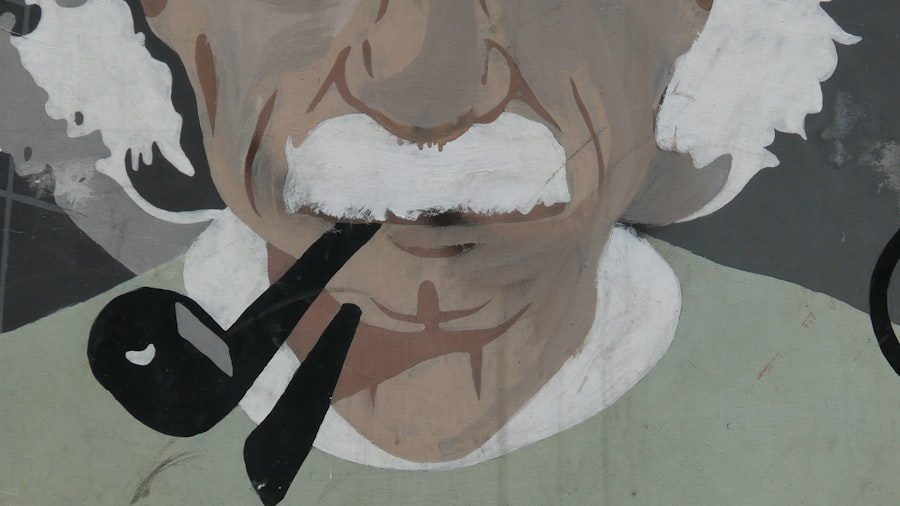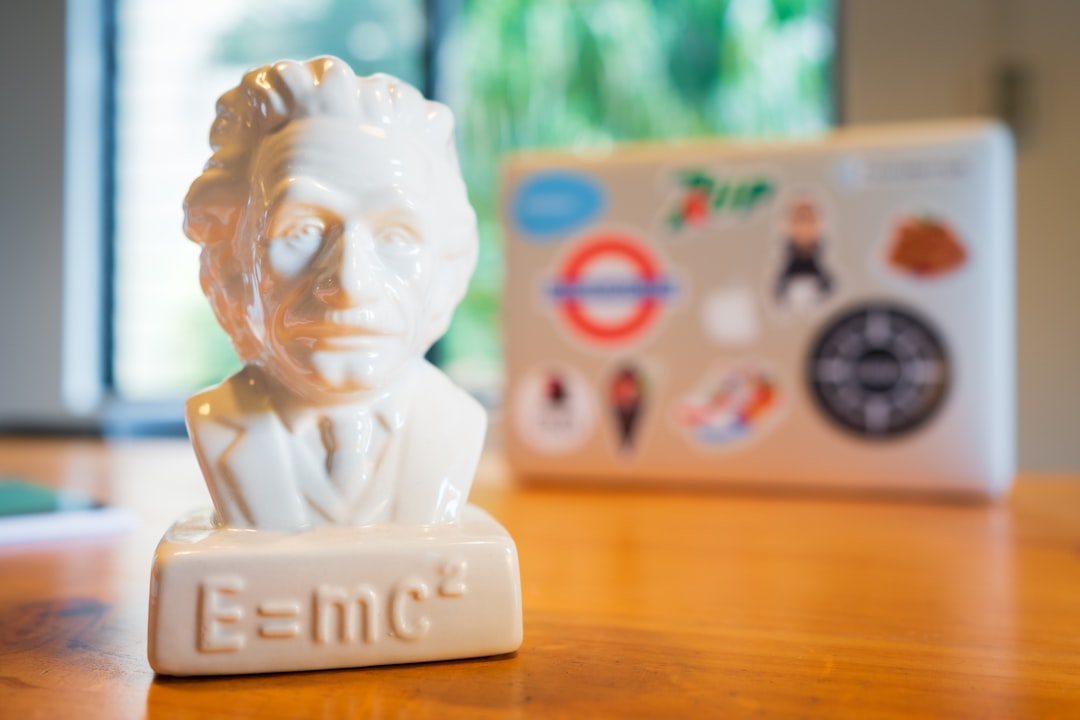Albert Einstein’s first marriage to Mileva Marić is a fascinating chapter in the life of one of history’s most renowned physicists. Born in 1875 in Titel, Serbia, Mileva was not only a brilliant mathematician but also one of the few women of her time to pursue higher education in the sciences. She met Einstein while they were both students at the Polytechnic Institute in Zurich, where their shared passion for physics and mathematics sparked a deep intellectual connection.
Their relationship blossomed amidst the backdrop of a male-dominated academic environment, and it was Mileva’s intellect that initially drew Einstein to her. As their relationship progressed, they faced numerous challenges, including societal expectations and financial difficulties. Despite these obstacles, they decided to marry in 1903, a decision that was both a personal and professional partnership.
Mileva played a significant role in Einstein’s early work, often collaborating with him on scientific ideas and theories. Their marriage was marked by a unique blend of love and intellectual camaraderie, which would later be overshadowed by the complexities of their personal lives.
Key Takeaways
- Einstein’s first marriage was to Mileva Marić, a fellow physicist and classmate at the Zurich Polytechnic.
- The relationship between Einstein and Mileva was marked by intellectual collaboration and mutual support, but also by financial struggles and personal challenges.
- Einstein and Mileva had two sons, Hans Albert and Eduard, but their marriage eventually dissolved due to infidelity and growing apart.
- After his divorce from Mileva, Einstein married his cousin Elsa Löwenthal, who provided him with emotional support and stability.
- Einstein’s marriages had a significant impact on his work, with Mileva contributing to his early scientific endeavors and Elsa providing a supportive environment for his later achievements.
The Relationship Between Einstein and Mileva
The relationship between Einstein and Mileva was characterized by both passion and tension. They shared a profound love for science, which often served as the foundation of their bond. However, as time went on, the pressures of life began to take their toll.
While they initially supported each other’s ambitions, the dynamics shifted as Einstein’s career began to flourish. You might find it interesting that Mileva, who had once been a promising physicist in her own right, gradually found herself relegated to the background as her husband’s fame grew. Their correspondence reveals a deep emotional connection, filled with affection and intellectual discourse.
As Einstein became more absorbed in his work, Mileva struggled with feelings of isolation and frustration. The couple’s differing aspirations and the societal expectations placed upon them created a rift that would ultimately prove insurmountable.
You can sense the tension in their letters, where love and resentment often intertwined, reflecting the complexities of their relationship.
The Birth of Einstein’s Children

The couple welcomed their first child, Lieserl, in 1902, before their marriage. Lieserl’s existence remains somewhat shrouded in mystery; she was born out of wedlock and later disappeared from historical records, leaving many questions unanswered about her fate. Following their marriage, they had two more children: Hans Albert, born in 1904, and Eduard, born in 1910.
The arrival of these children brought both joy and additional stress to their already strained relationship. As you delve into the family dynamics, you can see how parenthood affected both Einstein and Mileva. While they cherished their children, the responsibilities of raising them added to the pressures they faced as a couple.
Mileva often took on the primary caregiving role, which further distanced her from her own academic pursuits. The children became a source of both pride and contention; as Einstein’s career advanced, Mileva’s dreams began to fade into the background.
The Dissolution of Einstein’s First Marriage
| Year | Event |
|---|---|
| 1919 | Einstein’s first marriage to Mileva Maric is dissolved |
| 1922 | Einstein marries his cousin, Elsa Löwenthal |
The dissolution of Einstein’s first marriage was a gradual process marked by increasing discord and emotional distance. By 1914, it became clear that their relationship was deteriorating. The couple’s differing priorities and aspirations led to frequent arguments and misunderstandings.
You might find it poignant that despite their initial love and intellectual partnership, they were unable to reconcile their differences as life unfolded. In 1919, after years of separation and negotiation, Einstein and Mileva officially divorced. The terms of their divorce were notable; Einstein agreed to give Mileva a significant portion of his future earnings in exchange for custody of their two sons.
This decision reflected not only his commitment to his children but also an acknowledgment of Mileva’s sacrifices throughout their marriage. The divorce marked a turning point in both their lives; while it freed Einstein to pursue his career without personal constraints, it left Mileva grappling with the loss of her partner and her own unfulfilled ambitions.
Einstein’s Second Marriage: Elsa Löwenthal
Einstein’s second marriage to Elsa Löwenthal came shortly after his divorce from Mileva. Elsa was not only his cousin but also a woman who understood the complexities of his life as a public figure. Born in 1876 in Berlin, she had been married before and had two daughters from her previous marriage.
When you consider the timing of their union in 1919, it becomes evident that Elsa provided Einstein with both companionship and stability during a tumultuous period in his life. Their relationship was markedly different from his first marriage; Elsa was more pragmatic and less academically inclined than Mileva. This shift allowed Einstein to focus on his work without the emotional turmoil that had characterized his first marriage.
You might appreciate how Elsa took on the role of caretaker, managing household affairs and supporting Einstein’s career while he navigated the demands of fame and scientific inquiry.
The Love Story of Einstein and Elsa

The love story between Einstein and Elsa is often described as one of mutual support and understanding. Their bond deepened over time as they navigated the challenges that came with Einstein’s growing fame. Unlike his first marriage, where intellectual rivalry had created tension, Elsa embraced her role as a supportive partner without competing for recognition in the scientific realm.
This dynamic allowed for a more harmonious relationship. You may find it heartwarming that Elsa often accompanied Einstein on his travels, providing him with companionship during public engagements and lectures. Their shared experiences fostered a sense of unity that was absent in his previous marriage.
As they grew older together, their affection for one another became evident through their correspondence and public appearances. Their love story is one that highlights the importance of partnership in both personal and professional realms.
The Impact of Einstein’s Marriages on His Work
Einstein’s marriages had a profound impact on his work and scientific achievements. His first marriage to Mileva Marić provided him with intellectual stimulation during his formative years as a physicist. You might consider how her contributions to his early theories were significant; she was not just a supportive spouse but an active collaborator who engaged with his ideas.
However, as his career progressed, the strain of personal life began to overshadow his professional pursuits. The emotional turmoil stemming from his first marriage likely influenced some of his later work, as he grappled with feelings of guilt and responsibility towards Mileva and their children.
This shift contributed to some of his most significant scientific breakthroughs during the 1920s and 1930s.
Einstein’s Views on Love and Marriage
Einstein’s views on love and marriage evolved throughout his life, shaped by his experiences with both Mileva and Elsa. Initially, he held romantic notions about love that were intertwined with intellectual companionship; he believed that true love should be based on mutual respect and shared interests. However, as you explore his later reflections on marriage, it becomes clear that he recognized its complexities.
In letters and interviews, Einstein expressed skepticism about traditional notions of marriage, often emphasizing the importance of personal freedom within relationships. He believed that love should not be possessive or confining but rather liberating for both partners. This perspective likely stemmed from his own experiences; having navigated two very different marriages, he understood that love could take many forms and that each relationship required its own unique balance.
The Legacy of Einstein’s Marriages
The legacy of Einstein’s marriages is multifaceted; they shaped not only his personal life but also influenced how he is perceived historically. His tumultuous relationship with Mileva Marić has sparked debates about gender roles in science and the sacrifices women often make for their partners’ careers. You might find it compelling how Mileva’s contributions have been largely overlooked in favor of her husband’s achievements.
Conversely, his second marriage to Elsa is often viewed through a lens of stability and support that allowed him to thrive professionally. Their partnership is seen as a testament to the importance of having a supportive companion who understands the demands of a high-profile career. Together, these marriages paint a complex picture of Einstein as both a brilliant scientist and a flawed human being navigating the intricacies of love and partnership.
Einstein’s Personal Life and Public Image
Einstein’s personal life was often at odds with his public image as a genius scientist. While he was celebrated for his groundbreaking theories in physics, his relationships revealed a more vulnerable side to him—one marked by emotional struggles and personal conflicts. You may find it intriguing how public perception often focused solely on his intellect while overlooking the complexities of his personal relationships.
His marriages played a significant role in shaping this duality; while he was revered for his scientific contributions, he also faced scrutiny for his treatment of women in his life. The contrast between his public persona as an esteemed physicist and his private struggles with love and family dynamics adds depth to our understanding of him as an individual.
The Influence of Einstein’s Love Life on Popular Culture
Einstein’s love life has left an indelible mark on popular culture, inspiring countless portrayals in literature, film, and art. His relationships have been romanticized and dramatized, often focusing on the dichotomy between genius and vulnerability. You might notice how these narratives explore themes of sacrifice, ambition, and the complexities of human connection.
In various adaptations—whether in biographical films or fictionalized accounts—Einstein’s marriages serve as pivotal plot points that highlight not only his scientific achievements but also the emotional landscapes that shaped him as a person. These portrayals resonate with audiences because they reflect universal themes of love, loss, and resilience that transcend time and place. In conclusion, Albert Einstein’s marriages were integral to understanding both his personal journey and professional legacy.
From the intellectual partnership with Mileva Marić to the supportive companionship with Elsa Löwenthal, each relationship contributed uniquely to shaping the man behind the genius. As you reflect on these aspects of his life, you gain insight into how love can profoundly influence one’s path—both personally and professionally—leaving an enduring impact on history itself.
Albert Einstein, the renowned physicist known for his theory of relativity, had a personal life that was as intriguing as his scientific contributions. He was married twice, first to Mileva Marić in 1903 and later to his cousin Elsa Löwenthal in 1919. For those interested in exploring more about Einstein’s personal life and relationships, you can find a related article on this topic by visiting this page. This article delves into the complexities of Einstein’s marriages and how they intertwined with his groundbreaking work.
Why Time Freezes at Light Speed
FAQs
How many times did Albert Einstein get married?
Albert Einstein was married twice in his lifetime.
Who was Albert Einstein’s first wife?
Albert Einstein’s first wife was Mileva Marić, whom he married in 1903.
Who was Albert Einstein’s second wife?
Albert Einstein’s second wife was Elsa Löwenthal, whom he married in 1919.
Did Albert Einstein have any children with his wives?
Yes, Albert Einstein had three children with his first wife, Mileva Marić. Their names were Lieserl, Hans Albert, and Eduard.
